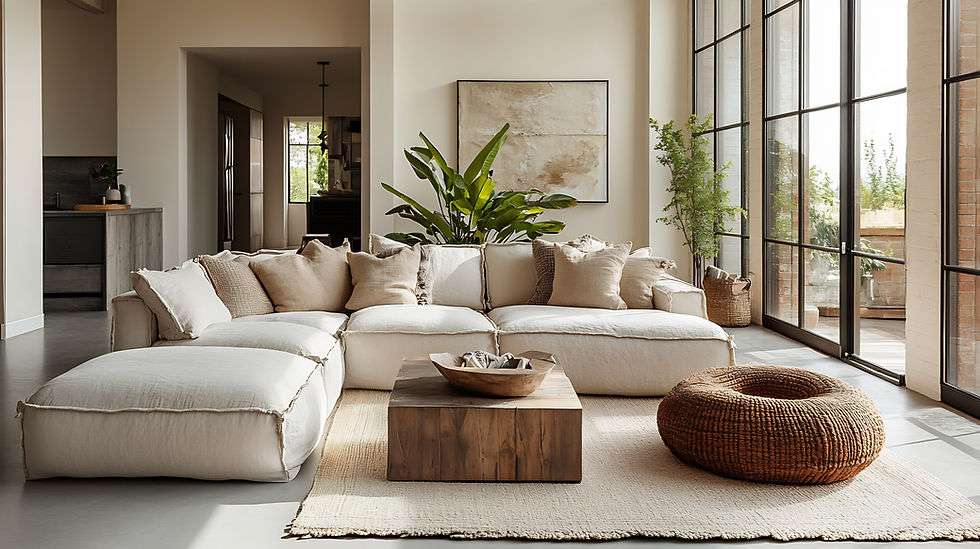Mastering Functional Interior Design for Your Home
- kroznovsky
- Sep 17
- 4 min read
When we think about designing our homes, we often focus on style and aesthetics. But what if we could combine beauty with purpose? That’s where practical interior design tips come into play. Creating a space that looks great and works well for our daily lives is the key to a happy home. Today, we’ll explore how to strike a balance that makes your living space both inviting and efficient.
Practical Interior Design Tips to Transform Your Space
Let’s start with some straightforward advice that you can apply right away. Practical interior design is about making smart choices that enhance your lifestyle. Here are some tips to get you started:
Prioritize storage solutions: Clutter can quickly ruin the look and feel of a room. Utilize built-in shelves, under-bed storage, or multifunctional furniture to keep your space tidy.
Choose durable materials: Opt for fabrics and finishes that can withstand everyday wear and tear, especially in high-traffic areas.
Maximize natural light: Position mirrors opposite windows to reflect light and make rooms feel larger and brighter.
Create zones: Define areas for different activities, such as reading, working, or relaxing, to keep your space organized and purposeful.
Incorporate greenery: Plants not only add color but also improve air quality and create a calming atmosphere.
By focusing on these elements, you’ll create a home that feels comfortable and looks polished without sacrificing function.

How to Choose Furniture That Works for You
Furniture plays a huge role in how a room functions. When selecting pieces, consider your daily routines and how you utilize each space. Here’s how to make smart furniture choices:
Measure your space: Before buying anything, measure your rooms carefully. This helps avoid overcrowding or buying pieces that are too small.
Opt for multi-purpose furniture: A sofa bed, an ottoman with storage, or a fold-out desk can save space and add versatility.
Consider comfort and style: Select furniture that feels comfortable to use and aligns with your design preferences. Don’t sacrifice comfort for looks.
Consider the flow: Arrange furniture to allow easy movement. Avoid blocking pathways or creating cramped areas.
Invest in quality where it counts: Spend more on items you use daily, like your bed or sofa, to ensure durability and comfort.
By following these steps, you’ll create a space that supports your lifestyle and looks inviting.

What is the 70/30 Rule in Interior Design?
The 70/30 rule is a simple guideline that helps balance your space visually and functionally. It suggests that 70% of your room should be composed of larger, more neutral elements, while the remaining 30% can be reserved for bold accents or decorative pieces. Here’s how to apply it:
70% Base: This includes walls, flooring, large furniture, and major fixtures. Stick to neutral or muted colors and simple designs here.
30% Accent: Use this portion for colorful pillows, artwork, rugs, or statement furniture. These elements add personality and interest without overwhelming the space.
This rule helps maintain harmony and prevents your room from feeling cluttered or chaotic. It’s a great way to experiment with trends or bold colors without making a full commitment.

Incorporating Functional Interior Design into Your Home
Now, let’s talk about how to bring everything together with functional interior design. This approach focuses on making your home not only beautiful but also practical. Here’s how to do it:
Plan your layout carefully: Consider how you move through your home and arrange furniture to support these paths.
Utilize smart storage: Cabinets, drawers, and shelves should be easily accessible and well-organized to minimize clutter.
Choose lighting wisely: Layer your lighting with ambient, task, and accent lights to create a flexible and comfortable environment.
Select materials that suit your lifestyle: For example, if you have kids or pets, choose stain-resistant fabrics and durable flooring.
Personalize with purpose: Decorate with items that bring you joy and serve a function, such as a beautiful clock or a stylish basket for blankets.
By focusing on these principles, you’ll create a home that feels effortless and welcoming every day.
Tips for Maintaining Your Functional and Stylish Home
Once you’ve designed your space, maintaining its functionality and style is the next step. Here are some easy habits to adopt:
Regularly declutter: Set aside time each month to clear out items you no longer need.
Rotate decor seasonally: Swap out pillows, throws, or artwork to keep your space fresh without a complete redesign.
Keep cleaning supplies handy: Store them in convenient locations to encourage quick cleanups.
Update lighting bulbs: Use energy-efficient bulbs and replace them as needed to maintain good lighting.
Review your layout annually: As your needs change, don’t hesitate to rearrange furniture or add new storage solutions.
These small actions help your home stay comfortable and functional over time.
We hope these practical interior design tips inspire you to create a home that truly works for you. Remember, the best spaces are those that reflect your lifestyle and make everyday living easier. Let’s embrace design that’s both beautiful and purposeful!




Comments